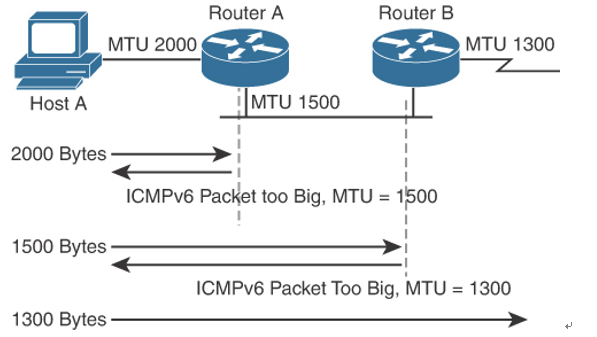Name resolution for IPv6 addresses can be static or dynamic. Just as with IPv4, resolution of static names to IPv6 addresses can be manually configured in the host configuration file. Dynamic name resolution relies on the Domain Name System (DNS).
IPv4 uses A records to provide FQDN-to-IPv4 address resolution. DNS adds a resource record (RR) to support name-to-IPv6 address resolution. RFC 3596 describes the addition of a new DNS resource record type to support the transition to IPv6 name resolution. The new record type is AAAA, commonly known as “quad-A.” Given a domain name, the AAAA record returns an IPv6 address to the requesting host.
RFC 2874 specifies another DNS record for IPv6: the A6 resource record. The A6 record provides additional features and was intended to be a replacement for the AAAA RR. But RFC 3363 has changed the status of the A6 RR to deprecated.
Current DNS implementations need to be able to support A (for IPv4) and AAAA resource records, with type A having the highest priority and AAAA the lowest.
For hosts that support dual-stack (IPv4 and IPv6), the application decides which stack to use and accordingly requests an AAAA or A record. As shown in Figure 2-7, the client device requests the AAAA record of the destination IPv6 server. The DNS server returns the IPv6 address. Note that this is the same DNS server that supports IPv4 addresses; no separate DNS servers are needed for IPv6 networks.

Figure 2-7 IPv6 DNS AAAA Request
Path MTU Discovery
IPv6 does not allow packet fragmentation throughout the internetwork. Only sending hosts are allowed to fragment. Routers are not allowed to fragment packets. RFC 2460 specifies that the MTU of every link in an IPv6 address must be 1280 bytes or greater. RFC 1981 recommends that nodes should implement IPv6 path MTU discovery to determine whether any paths are greater than 1280 bytes. ICMPv6 packet-too-big error messages determine the path MTU. Nodes along the path send the ICMPv6 packet-too-big message to the sending host if the packet is larger than the outgoing interface MTU.
Figure 2-8 shows a host sending a 2000-byte packet. Because the outgoing interface MTU is 1500 bytes, Router A sends an ICMPv6 packet-too-big error message back to Host A. The sending host then sends a 1500-byte packet. The outgoing interface MTU at Router B is 1300 bytes. Router B sends an ICMPv6 packet-too-big error message to Host A. Host A then sends the packet with 1300 bytes.

Figure 2-8 ICMPv6 Packet-Too-Big Message